-
 Bitcoin
Bitcoin $106,437.2012
0.82% -
 Ethereum
Ethereum $2,442.5287
0.82% -
 Tether USDt
Tether USDt $1.0005
-0.02% -
 XRP
XRP $2.1812
-0.27% -
 BNB
BNB $645.1327
0.45% -
 Solana
Solana $146.2379
0.39% -
 USDC
USDC $0.9999
-0.01% -
 TRON
TRON $0.2751
0.92% -
 Dogecoin
Dogecoin $0.1662
-0.23% -
 Cardano
Cardano $0.5827
-1.22% -
 Hyperliquid
Hyperliquid $37.5225
0.04% -
 Bitcoin Cash
Bitcoin Cash $479.0877
4.02% -
 Sui
Sui $2.7846
-3.27% -
 Chainlink
Chainlink $13.3576
0.84% -
 UNUS SED LEO
UNUS SED LEO $9.0252
-1.20% -
 Stellar
Stellar $0.2455
-1.07% -
 Avalanche
Avalanche $18.0680
-1.81% -
 Toncoin
Toncoin $2.8948
-1.07% -
 Shiba Inu
Shiba Inu $0.0...01164
-1.65% -
 Litecoin
Litecoin $85.0637
-0.06% -
 Hedera
Hedera $0.1526
-0.89% -
 Monero
Monero $316.2941
0.78% -
 Ethena USDe
Ethena USDe $1.0003
-0.04% -
 Polkadot
Polkadot $3.4113
-1.87% -
 Dai
Dai $1.0000
-0.01% -
 Bitget Token
Bitget Token $4.4488
5.16% -
 Uniswap
Uniswap $7.1740
3.09% -
 Pi
Pi $0.5968
11.43% -
 Pepe
Pepe $0.0...01010
-0.65% -
 Aave
Aave $264.3189
0.40%
Is it a buying opportunity when the SKDJ slow line falls below 20?
When SKDJ drops below 20 in crypto trading, it may signal weakening downward momentum and a potential buying opportunity, but confirmation from other indicators is essential due to market volatility.
Jun 25, 2025 at 01:29 pm
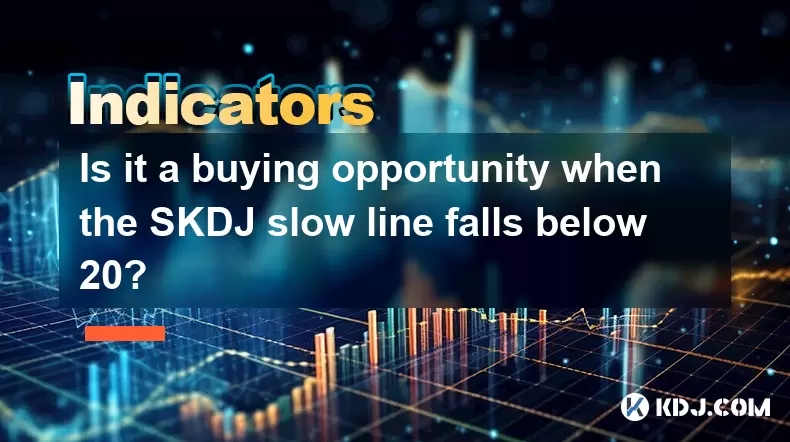
Understanding SKDJ and Its Significance in Cryptocurrency Trading
SKDJ, or Slow Stochastic Divergence Index, is a technical indicator used by traders to assess momentum and potential reversal points in asset prices. In the context of cryptocurrency trading, where volatility is high and trends can change rapidly, understanding how to interpret SKDJ values becomes crucial. The indicator oscillates between 0 and 100, with levels below 20 typically considered oversold, suggesting that an asset might be undervalued.
In cryptocurrency markets, especially for altcoins and newly launched tokens, price movements are often exaggerated due to speculative behavior. This makes tools like SKDJ particularly valuable for identifying potential turning points. However, it's essential to remember that no single indicator should be used in isolation to make trading decisions.
What Does It Mean When SKDJ Falls Below 20?
When the SKDJ slow line drops below 20, it indicates that the asset may be entering oversold territory. In traditional markets, this level often signals a possible bounce or upward correction. In crypto, however, things can behave differently due to market sentiment, regulatory news, and macroeconomic factors.
- A drop below 20 does not automatically mean the price will reverse.
- It suggests that downward momentum is weakening, which could lead to a buying opportunity if other indicators confirm the trend.
- Traders should also look at volume, candlestick patterns, and support/resistance levels before acting on such a signal.
It’s important to note that false signals are common in crypto, so relying solely on SKDJ could lead to premature entries or missed opportunities.
Historical Examples in Cryptocurrencies
Looking back at several instances in major cryptocurrencies like Bitcoin (BTC) and Ethereum (ETH), we can observe how SKDJ behaved during sharp corrections:
- During the March 2020 crash, BTC’s SKDJ dipped below 20 multiple times. Those who bought near those levels benefited from significant rebounds.
- In mid-2022, when Ethereum fell sharply due to macroeconomic pressures, the SKDJ hit 18. However, the price continued to decline for weeks, showing that oversold conditions can persist in crypto.
These examples highlight the importance of contextual analysis. Markets driven by fear or panic may not react as expected to traditional technical signals.
How to Use SKDJ in Conjunction With Other Indicators
To increase the reliability of SKDJ-based signals, consider combining it with other analytical tools:
- Moving Averages: If the price is above key moving averages (e.g., 50-day or 200-day), a low SKDJ reading might indicate a stronger buy signal.
- Relative Strength Index (RSI): If RSI is also below 30, and diverging from price, it adds weight to the possibility of a reversal.
- Volume Analysis: An uptick in volume during a SKDJ recovery can serve as confirmation of institutional or retail interest returning to the asset.
Avoiding false positives requires cross-checking these elements. For instance, if volume remains low despite SKDJ dipping below 20, it may suggest that buyers are not stepping in aggressively.
Step-by-Step Guide to Evaluating a Potential Buy Signal
If you're considering entering a trade based on SKDJ falling below 20, follow these steps carefully:
- Check if the SKDJ slow line has indeed fallen below 20.
- Look at the broader trend using weekly or daily charts.
- Confirm with RSI whether the asset is also oversold (below 30).
- Observe if there’s any bullish divergence forming between price and SKDJ.
- Analyze recent news or events that could impact the asset positively or negatively.
- Consider setting up a limit order slightly above the current price to avoid slippage if the reversal begins.
- Set a stop-loss below the most recent swing low to manage risk effectively.
Each step plays a role in reducing emotional decision-making and increasing the probability of success.
Common Mistakes Traders Make With SKDJ Signals
Many traders misinterpret SKDJ readings because they fail to account for the following:
- Ignoring market cycles: What works during a bull run may not work during a bear market.
- Overtrading: Entering positions every time SKDJ hits 20 can result in losses if the downtrend continues.
- Neglecting fundamental shifts: A coin may fall into oversold territory due to negative developments, not just technical weakness.
- Failing to adjust parameters: Default SKDJ settings may not suit all assets or timeframes; customization is often necessary.
By being aware of these pitfalls, traders can better assess whether a particular SKDJ signal aligns with their strategy and risk tolerance.
Frequently Asked Questions
Q: Can I use SKDJ alone to make trades in crypto?
While SKDJ can provide useful insights, it's best used alongside other indicators and chart patterns. Relying solely on SKDJ increases the risk of false signals, especially in volatile crypto markets.
Q: How long can a cryptocurrency stay oversold according to SKDJ?
There's no fixed duration. Some assets may remain oversold for hours, while others may stay that way for days, depending on market dynamics and external factors influencing the price.
Q: Is the SKDJ more reliable on certain timeframes?
Generally, higher timeframes like the 4-hour or daily chart tend to produce more reliable SKDJ signals compared to shorter intervals like 5-minute or 15-minute charts.
Q: Should I always take action when SKDJ rises above 20 after being below it?
Not necessarily. Rising above 20 indicates improving momentum but doesn’t guarantee a reversal. Wait for additional confirmation like bullish candlesticks or rising volume before taking action.
Disclaimer:info@kdj.com
The information provided is not trading advice. kdj.com does not assume any responsibility for any investments made based on the information provided in this article. Cryptocurrencies are highly volatile and it is highly recommended that you invest with caution after thorough research!
If you believe that the content used on this website infringes your copyright, please contact us immediately (info@kdj.com) and we will delete it promptly.
- Dogecoin's Crossroads: Buy Signal or Risky Business?
- 2025-06-25 18:25:12
- Aptos (APT) Price Rally: Bulls Eyeing $7 After Bullish Breakout
- 2025-06-25 18:45:12
- Mastercard, Chainlink, and Bitcoin: A New York Minute on the Future of Finance
- 2025-06-25 19:05:12
- Pi Network Price Prediction: Navigating the Coin's Breakout and Potential Drop
- 2025-06-25 18:25:12
- TruSpine, Bitcoin Treasury, and Stock Soar: What's Driving the Market?
- 2025-06-25 18:45:12
- Truth Social, Bitcoin ETF, and NYSE Arca: A Wall Street Tango with Political Undertones?
- 2025-06-25 19:27:13
Related knowledge
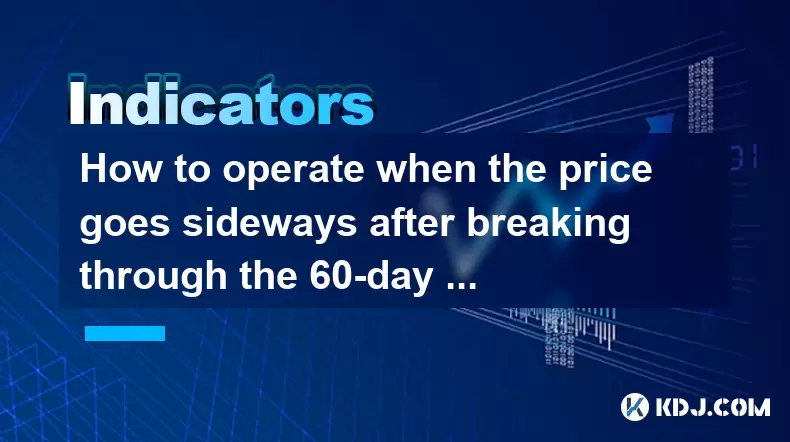
How to operate when the price goes sideways after breaking through the 60-day line with large volume?
Jun 25,2025 at 07:08pm
Understanding the 60-Day Line Breakout with High VolumeWhen a cryptocurrency asset breaks through its 60-day moving average line with large volume, it often signals a potential shift in momentum. This kind of breakout typically suggests that institutional or large retail traders are entering the market aggressively. However, when the price starts to mov...
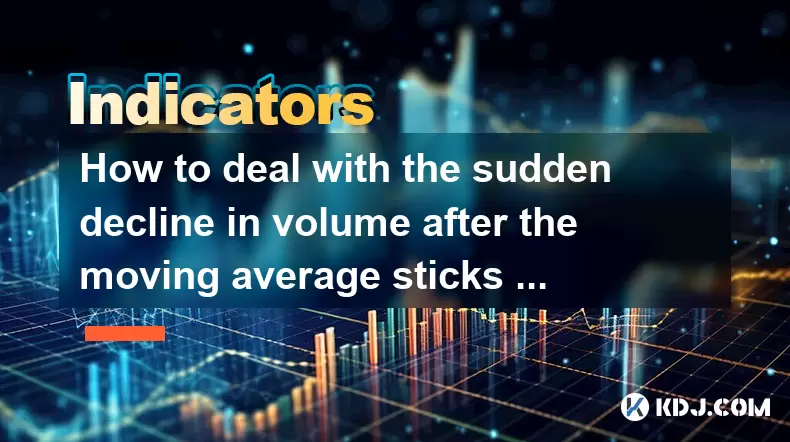
How to deal with the sudden decline in volume after the moving average sticks together?
Jun 25,2025 at 06:35pm
Understanding the Moving Average Convergence and Its ImplicationsIn the world of cryptocurrency trading, moving averages (MAs) are essential tools used to identify trends and potential reversals. When multiple moving averages converge or 'stick together,' it often indicates a period of consolidation or indecision in the market. This phenomenon can be ob...
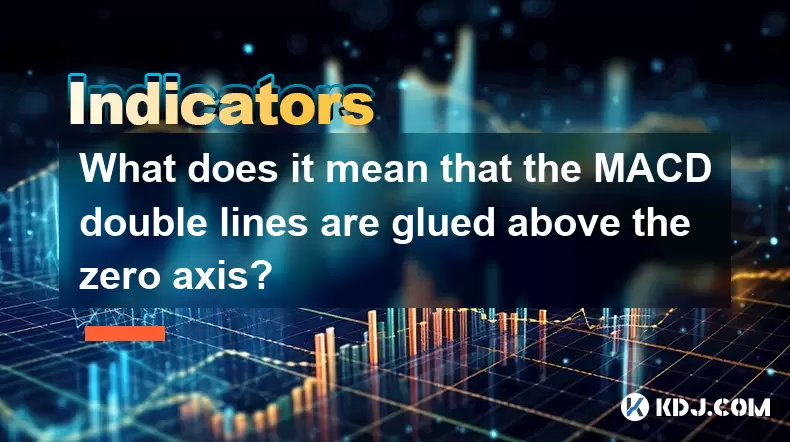
What does it mean that the MACD double lines are glued above the zero axis?
Jun 25,2025 at 07:22pm
Understanding the MACD Indicator in Cryptocurrency TradingThe Moving Average Convergence Divergence (MACD) is one of the most widely used technical indicators among cryptocurrency traders. It helps identify potential trend reversals, momentum shifts, and entry or exit points. The MACD consists of three main components: the MACD line, the signal line, an...
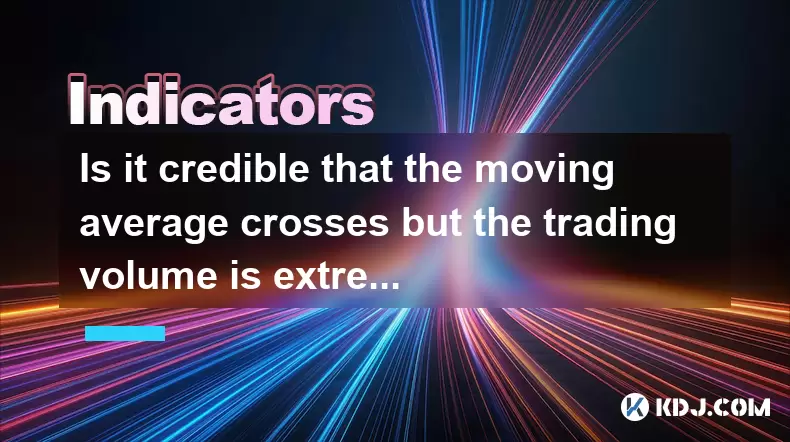
Is it credible that the moving average crosses but the trading volume is extremely shrinking?
Jun 25,2025 at 07:28pm
Understanding the Moving Average CrossoverA moving average crossover is one of the most widely used technical indicators in cryptocurrency trading. It typically involves two moving averages — a short-term (e.g., 9-day) and a long-term (e.g., 21-day). When the short-term crosses above the long-term, it's considered a bullish signal, while a cross below i...
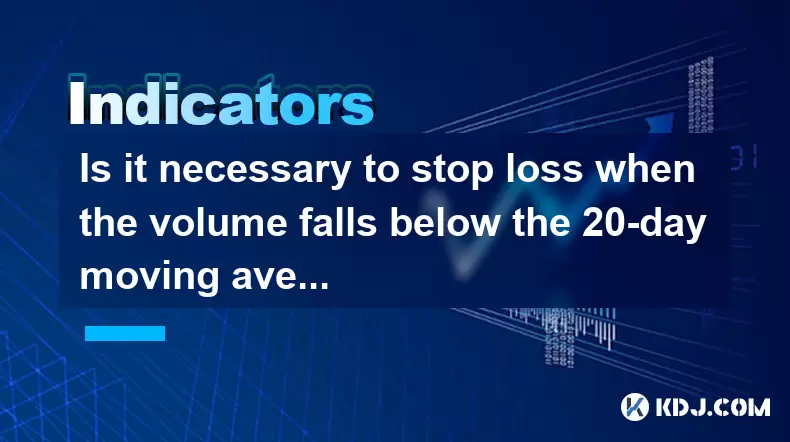
Is it necessary to stop loss when the volume falls below the 20-day moving average?
Jun 25,2025 at 05:00pm
Understanding the 20-Day Moving Average in Cryptocurrency TradingIn cryptocurrency trading, technical analysis plays a pivotal role in decision-making. One of the most commonly used indicators is the 20-day moving average (MA). This metric calculates the average price of an asset over the past 20 days and helps traders identify trends and potential reve...
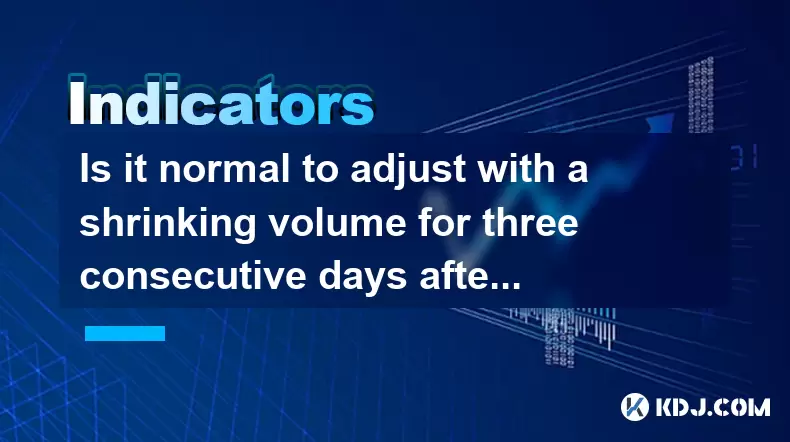
Is it normal to adjust with a shrinking volume for three consecutive days after breaking through the previous high with a large volume?
Jun 25,2025 at 03:49pm
Understanding Volume and Price Relationship in Cryptocurrency TradingIn cryptocurrency markets, volume is a critical metric that reflects the number of assets traded over a specific period. When a cryptocurrency breaks through a previous high with large volume, it typically signals strong buying pressure and market confidence. However, it's not uncommon...

How to operate when the price goes sideways after breaking through the 60-day line with large volume?
Jun 25,2025 at 07:08pm
Understanding the 60-Day Line Breakout with High VolumeWhen a cryptocurrency asset breaks through its 60-day moving average line with large volume, it often signals a potential shift in momentum. This kind of breakout typically suggests that institutional or large retail traders are entering the market aggressively. However, when the price starts to mov...

How to deal with the sudden decline in volume after the moving average sticks together?
Jun 25,2025 at 06:35pm
Understanding the Moving Average Convergence and Its ImplicationsIn the world of cryptocurrency trading, moving averages (MAs) are essential tools used to identify trends and potential reversals. When multiple moving averages converge or 'stick together,' it often indicates a period of consolidation or indecision in the market. This phenomenon can be ob...

What does it mean that the MACD double lines are glued above the zero axis?
Jun 25,2025 at 07:22pm
Understanding the MACD Indicator in Cryptocurrency TradingThe Moving Average Convergence Divergence (MACD) is one of the most widely used technical indicators among cryptocurrency traders. It helps identify potential trend reversals, momentum shifts, and entry or exit points. The MACD consists of three main components: the MACD line, the signal line, an...

Is it credible that the moving average crosses but the trading volume is extremely shrinking?
Jun 25,2025 at 07:28pm
Understanding the Moving Average CrossoverA moving average crossover is one of the most widely used technical indicators in cryptocurrency trading. It typically involves two moving averages — a short-term (e.g., 9-day) and a long-term (e.g., 21-day). When the short-term crosses above the long-term, it's considered a bullish signal, while a cross below i...

Is it necessary to stop loss when the volume falls below the 20-day moving average?
Jun 25,2025 at 05:00pm
Understanding the 20-Day Moving Average in Cryptocurrency TradingIn cryptocurrency trading, technical analysis plays a pivotal role in decision-making. One of the most commonly used indicators is the 20-day moving average (MA). This metric calculates the average price of an asset over the past 20 days and helps traders identify trends and potential reve...

Is it normal to adjust with a shrinking volume for three consecutive days after breaking through the previous high with a large volume?
Jun 25,2025 at 03:49pm
Understanding Volume and Price Relationship in Cryptocurrency TradingIn cryptocurrency markets, volume is a critical metric that reflects the number of assets traded over a specific period. When a cryptocurrency breaks through a previous high with large volume, it typically signals strong buying pressure and market confidence. However, it's not uncommon...
See all articles























































































